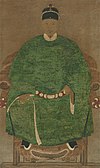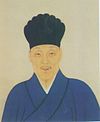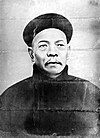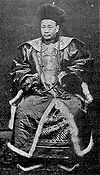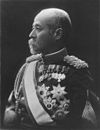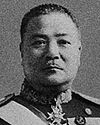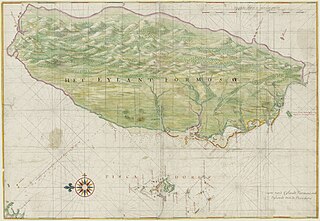
The history of the island of Taiwan dates back tens of thousands of years to the earliest known evidence of human habitation. The sudden appearance of a culture based on agriculture around 3000 BC is believed to reflect the arrival of the ancestors of today's Taiwanese indigenous peoples. People from China gradually came into contact with Taiwan by the time of the Yuan dynasty (1271–1368) and Han Chinese people started settling there by the early 17th century. Named Formosa by Portuguese explorers, the south of the island was colonized by the Dutch in the 17th century whilst the Spanish built a settlement in the north which lasted until 1642. These European settlements were followed by an influx of Hoklo and Hakka immigrants from Fujian and Guangdong.
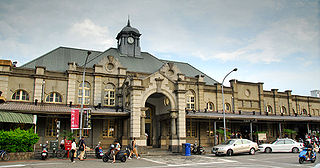
Taiwan Province is a de jure administrative division of the Republic of China (ROC). Provinces remain a titular division as a part of the Constitution of the Republic of China, but are no longer considered to have any administrative function practically.

The Penghu or Pescadores Islands are an archipelago of 90 islands and islets in the Taiwan Strait, located approximately 50 km (31 mi) west of the main island of Taiwan across the Penghu Channel, covering an area of 141 square kilometers (54 sq mi). The archipelago collectively forms Penghu County of Taiwan and is the smallest county of Taiwan. The largest city is Magong, located on the largest island, which is also named Magong.
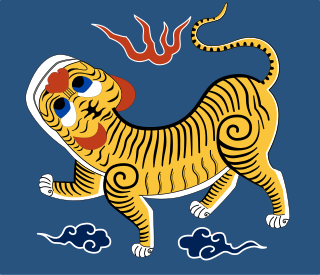
The Republic of Formosa was a short-lived republic that existed on the island of Taiwan in 1895 between the formal cession of Taiwan by the Qing dynasty of China to the Empire of Japan by the Treaty of Shimonoseki and its being taken over by Japanese troops. The Republic lasted 151 days; it was proclaimed on 23 May 1895 and extinguished on 21 October, when the Republican capital Tainan was taken over by the Japanese. Though sometimes claimed as the first East Asian republic to have been proclaimed, it was predated by the Lanfang Republic in Borneo, established in 1777, as well as by the Republic of Ezo in Japan, established in 1869.

Keelung, Chilung or Jilong, officially known as Keelung City, is a major port city situated in the northeastern part of Taiwan. With 361,082 inhabitants, the city forms a part of the Taipei–Keelung metropolitan area with its neighboring New Taipei City and Taipei.
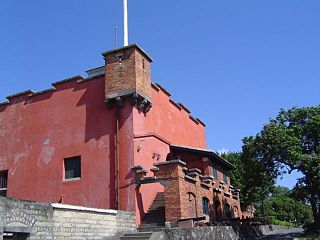
Fort Santo Domingo is a historical fortress in Tamsui District, New Taipei City, Taiwan. It was originally a wooden fort built in 1628 by the Spanish Empire, who named it "Fort Santo Domingo". However, the fort was then destroyed by the Spanish themselves, after losing the Second Battle of San Salvador to the Dutch Empire in 1642. After the battle, in 1644, the Dutch rebuilt a fort in the original site and renamed it "Fort Antonio". Since the Dutch were called "Red-haired People" by the Han immigrants during the time, the fort was then nicknamed "Fort Red Hair".(Chinese: 紅毛城; Pe̍h-ōe-jī: Âng-mn̂g-siâⁿ; lit. 'ang mo fort').

Anping District is a district of Tainan, Taiwan. In March 2012, it was named one of the Top 10 Small Tourist Towns by the Tourism Bureau of Taiwan. It is home to 64,408 people according to the 2020 census.

The island of Taiwan, also commonly known as Formosa, was partly under colonial rule by the Dutch Republic from 1624 to 1662 and from 1664 to 1668. In the context of the Age of Discovery, the Dutch East India Company established its presence on Formosa to trade with the Ming Empire in neighbouring China and Tokugawa shogunate in Japan, and also to interdict Portuguese and Spanish trade and colonial activities in East Asia.

The Kingdom of Tungning, also known as Tywan by the British at the time, was a dynastic maritime state that ruled part of southwestern Taiwan and the Penghu islands between 1661 and 1683. It is the first predominantly ethnic Han state in Taiwanese history. At its zenith, the kingdom's maritime power dominated varying extents of coastal regions of southeastern China and controlled the major sea lanes across both China Seas, and its vast trade network stretched from Japan to Southeast Asia.
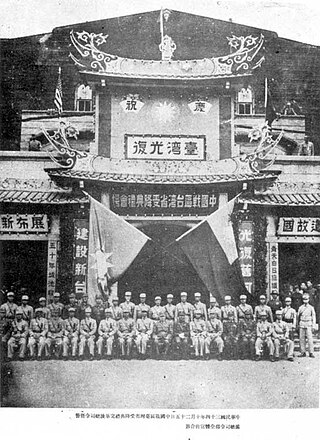
Retrocession Day is the name given to the annual observance and a former public holiday in Taiwan to commemorate the end of Japanese rule of Taiwan and Penghu, and the claimed retrocession ("return") of Taiwan to the Republic of China on 25 October 1945. However, the idea of "Taiwan retrocession" is in dispute.

The Japanese invasion of Taiwan, also known as Yiwei War in Chinese, was a conflict between the Empire of Japan and the armed forces of the short-lived Republic of Formosa following the Qing dynasty's cession of Taiwan to Japan in April 1895 at the end of the First Sino-Japanese War. The Japanese sought to take control of their new possession, while the Republican forces fought to resist Japanese occupation. The Japanese landed near Keelung on the northern coast of Taiwan on 29 May 1895, and in a five-month campaign swept southwards to Tainan. Although their advance was slowed by guerrilla activity, the Japanese defeated the Formosan forces whenever they attempted to make a stand. The Japanese victory at Baguashan on 27 August, the largest battle ever fought on Taiwanese soil, doomed the Formosan resistance to an early defeat. The fall of Tainan on 21 October ended organised resistance to Japanese occupation, and inaugurated five decades of Japanese rule in Taiwan.

The Qing dynasty ruled over the island of Taiwan from 1683 to 1895. The Qing dynasty sent an army led by general Shi Lang and defeated the Ming loyalist Kingdom of Tungning in 1683. Taiwan was then formally annexed in April 1684.
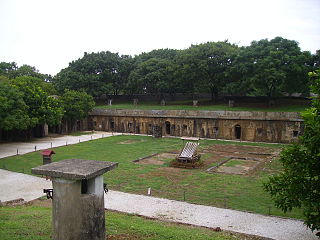
Hobe Fort or Huwei Fort is a historical fort located near Fort Santo Domingo, in Tamsui District, New Taipei, Taiwan, Republic of China.

The cultural history of Taiwan can be traced back to prehistoric Stone Age. Later the development of written languages made it easier to maintain traditions of the Taiwanese culture.

Spanish Formosa was a small colony of the Spanish Empire established in the northern tip of the island now known as Taiwan, then known to Europeans at the time as Formosa or to Spaniards as "Isla Hermosa" from 1626 to 1642. It was ceded to the Dutch Republic during the Eighty Years' War.
The Battle of Keelung was the first significant engagement of the Japanese invasion of Taiwan (1895) on 2–3 June 1895 when the short-lived Republic of Formosa sought to repel the Japanese military forces sent there to occupy the ceded territories, by China's Qing dynasty, of the Taiwan and the Pescadores Islands to Japan under the April 1895 Treaty of Shimonoseki. The treaty was the result of China's defeat in the First Sino-Japanese War.

Tamsui District is a seaside district in New Taipei City, Taiwan adjacent to the Tamsui River and overlooking the Taiwan Strait. The name of the district means "fresh water" in Chinese. Although modest in size, Tamsui plays a significant role in Taiwanese history and culture.

The Spanish expedition to Formosa was a campaign mounted by the Spanish based in Manila, Philippines in 1626. It was the Spanish response to Dutch settlements being built in Formosa, now known as Taiwan. In cooperation with the Portuguese, this venture was made to attract Chinese traders and curtail the expansion of Dutch power in Asia.
The history of Hsinchu extends over more than 400 years, making it one of the oldest cities in northern Taiwan.

The military history of Taiwan spans at least 400 years and is the history of battles and armed actions that took place in Taiwan and its surrounding islands. The island was the base of Chinese pirates who came into conflict with the Ming dynasty during the 16th century. From 1624 to 1662, Taiwan was the base of Dutch and Spanish colonies. The era of European colonization ended when a Ming general named Koxinga retreated to Taiwan as a result of the Ming-Qing War and ousted the Dutch in 1661. The Dutch held out in northern Taiwan until 1668 when they left due to indigenous resistance. Koxinga's dynasty ruled southwestern Taiwan as the Kingdom of Tungning and attacked the Qing dynasty during the Revolt of the Three Feudatories (1673-1681).








